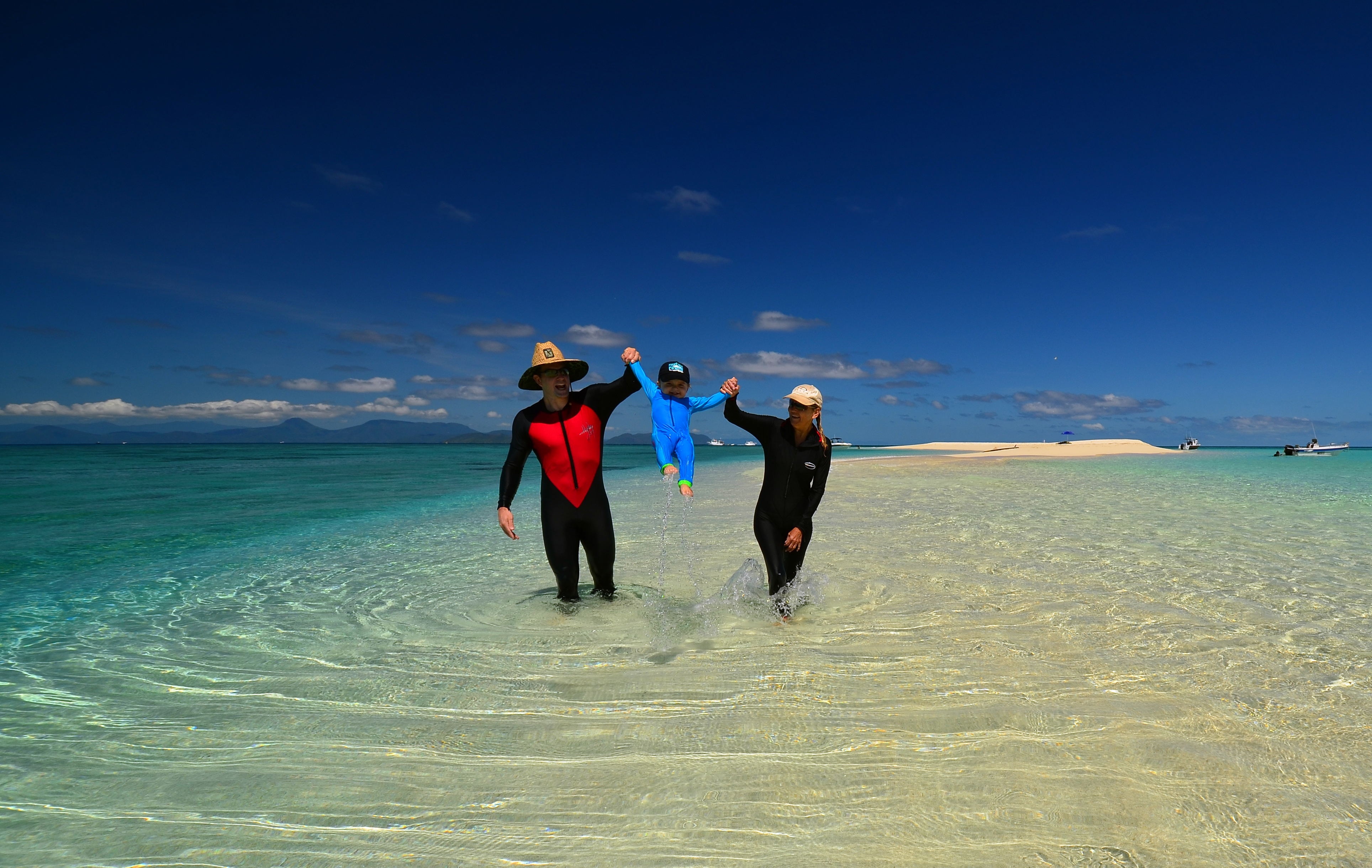The Great Barrier Reef is important for many people’s livelihoods, plays a central role in our culture and is highly valued for its influence of personal wellbeing, according to results from the Social and Economic Long Term Monitoring Program (Image: Matt Curnock).
The Great Barrier Reef is many different things to different people: a tropical playground, a natural wonder, and the domain of Nemo, Dory and Bruce. But it’s also home to around a million Australians, a booming tourism industry, major exporting ports and countless fishing, farming and agriculture operations.
Indisputably the Reef has immense ecological importance as a unique site of marine biodiversity and is viewed by many as the technicolour jewel in the crown of Australia’s UNESCO World Heritage-listed sites. The Reef also brings in $5.7 billion annually and generates over 64,000 full time jobs.
These impressive figures however only hint at the full value of the Great Barrier Reef to Australia and Australians.
The future of the Reef is an international issue: just this weekend we saw the US President, Barack Obama, talking about his desire for his grandchildren’s generation to still be able to enjoy the Reef in the way that we’re able to today. Knowing how to plan and manage the best outcomes for it is of the upmost importance.
To derive a clearer picture, we set out to measure the human dimensions of the Great Barrier Reef through the Social and Economic Long Term Monitoring Program (SELTMP).
In the largest study of its kind, we surveyed over 6,000 tourists and coastal residents, as well as over 2,000 Australians outside the region, to understand and measure use and dependency, personal wellbeing and the cultural connectedness of people to the Great Barrier Reef.
It is no surprise we found that we love the Reef. In a snapshot of our results, we found that:
- a quarter of residents depend on the Reef for their household income
- many coastal residents feel it is part of their identity and provides a lifestyle they highly value
- appreciation of the aesthetic values are shared by all visitors and residents
- threats to the ongoing viability of the reef is a major concern to all user groups, and
- most coastal residents support regulations to protect the Reef.
The SELTMP was set up to assist reef managers and other decision-makers within the region to incorporate the human dimension into planning and management. Our work is providing information to help government, industry, researchers and communities understand trends, interconnections, conflicts, dependencies and vulnerabilities of user groups and so develop insights into the complex social and economic conditions of the Great Barrier Reef.
These results represent the current status and condition of the human dimension of the Great Barrier Reef which we will continue to monitor in the future.
The findings of the SELMTP 2013 baseline study were presented at the World Parks Congress in Sydney today. More information on the research can be found at eatlas.org.au/seltmp.
Media enquiries: contact Keirissa Lawson, 02 4960 6286, Keirissa.Lawson@csiro.au.




18th November 2014 at 3:10 pm
With regard to their combined effects on the GBR Is it possible to quantify by scale order, the comparison between ocean temp/ acidification(by climate change) and the terrestrial run-off(Anthropogenic causes)
24th November 2014 at 9:05 am
Climate change IS anthropogenic…